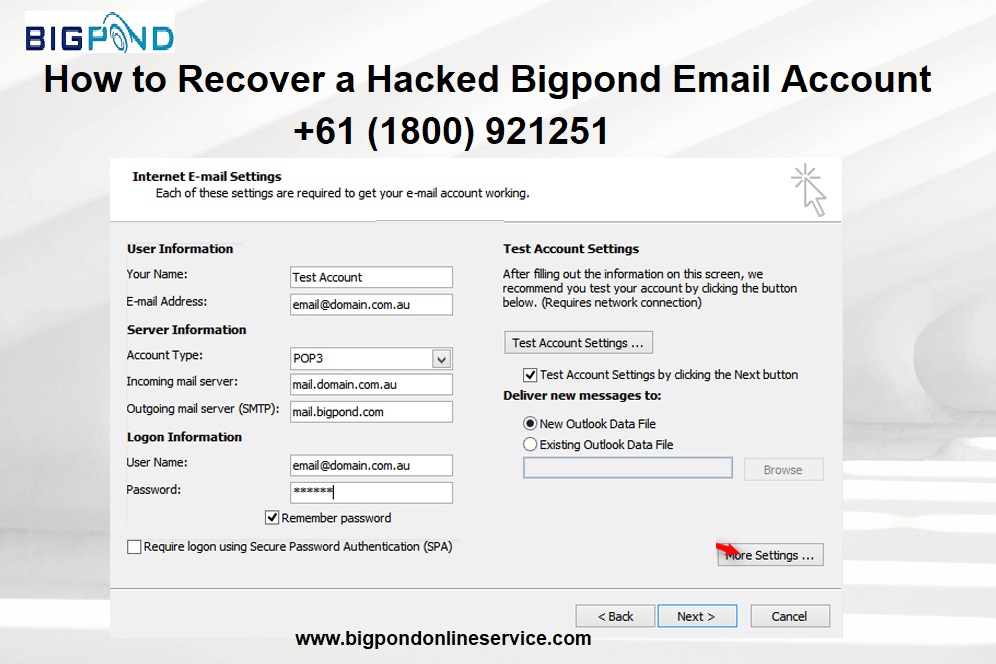
Losing control of your BigPond email account can be both a nuisance and a nightmare. Even worse is that it will most likely be used maliciously, thereby endangering not only your private information but also your contacts. In the event you find yourself in a situation where you have been targeted by hackers, it is important to remember that time is of utmost importance and every second counts when it comes to securing your account. This article will explain how to restore a BigPond email account that has been hacked as well as how to prevent it from happening again.
Identifying The Symptoms Of A Hacked BigPond Account
The first step, even before you try to recover a hacked account, is to actually determine if it has indeed been hacked. Some of these signs indicating a hacked account include the following:
- Login from Suspicious Locations: Login attempts from countries that are unusual to you will be detected from IT records maintained by the organization.
- Password or Account Failure: Unauthorized access is highly likely if the password is suddenly invalid and access to the account is impossible.
- Communication for Spam: Compromised accounts are often exploited by hackers to distribute spam or phishing emails. If friends or contacts complain about odd emails appearing to come from you, your account may have been hacked.
- Modifications in the Account Settings: During your BigPond access duration, some settings, such as the recovery emails or security questions, must not be viewed as unfamiliar.
How to Get Back a Hacked BigPond Account Step By Step
If you have any reason to believe that cyberstalking might have been done to your BigPond account, here are suggestions to follow for restoring and safeguarding your account.
- Start Off by Changing the Password
The first and most important process is to change your password before anything else. Proceed to the login page of BigPond, Telstra, and scan for the option that states “Forgotten your password?” Follow the rest of the steps provided to change the password to a strong and complex new one. When creating this password, include a variety of different characters and letters, both uppercase and lowercase, as well as numbers and symbols. Most importantly, you should never recycle obsolete passwords because it is easy for a hijacker to regain access.
- Analyze Security Settings and Their Parameter Settings
Once you change the password, log in to your BigPond account and carry on with account recovery steps. Attempt to find any unusual recovery email or phone number associated with the account because hackers may have added theirs too. Replace any information that appears to be irrelevant with your accurate details meant for recovery. This is to ensure that only you can recover the account in the future if need be.
- Activate Two-Factor Authorization (2FA)
Two-factor authentication (2FA) is an additional security mechanism offered to users of their BigPond account. If 2FA is enabled, a user will be required to submit a second form of authentication, such as a code received on their mobile phone, in addition to the username and password combination. This greatly reduces the possibility of unauthorized access even when the hacker has the target’s password.
- Run a Malware Scan on Your Device
There are instances where some hackers manage to hack into accounts via installed malware or spyware on the device. It is recommended to perform an extensive antivirus examination of the PC or smartphone to find any malware installed and clear it off. For better results, employ some trusted antivirus software.
Tips for Preventing Future Hacks
Change your BigPond password from time to time and do not use one password for many accounts. Be careful when reading phishing emails. Adhering to these operational principles will substantially decrease the chances of your account being hacked again.
Conclusion:
Follow-up procedures for recovering a hacked BigPond email account are not complex and include a myriad of steps, among which are resetting your password, modifying some security settings, activating two-factor identification, and scanning the device for the presence of malware. Early addressing of these issues will contribute to the restoration of the lost security in your account and also make your personal data secure.